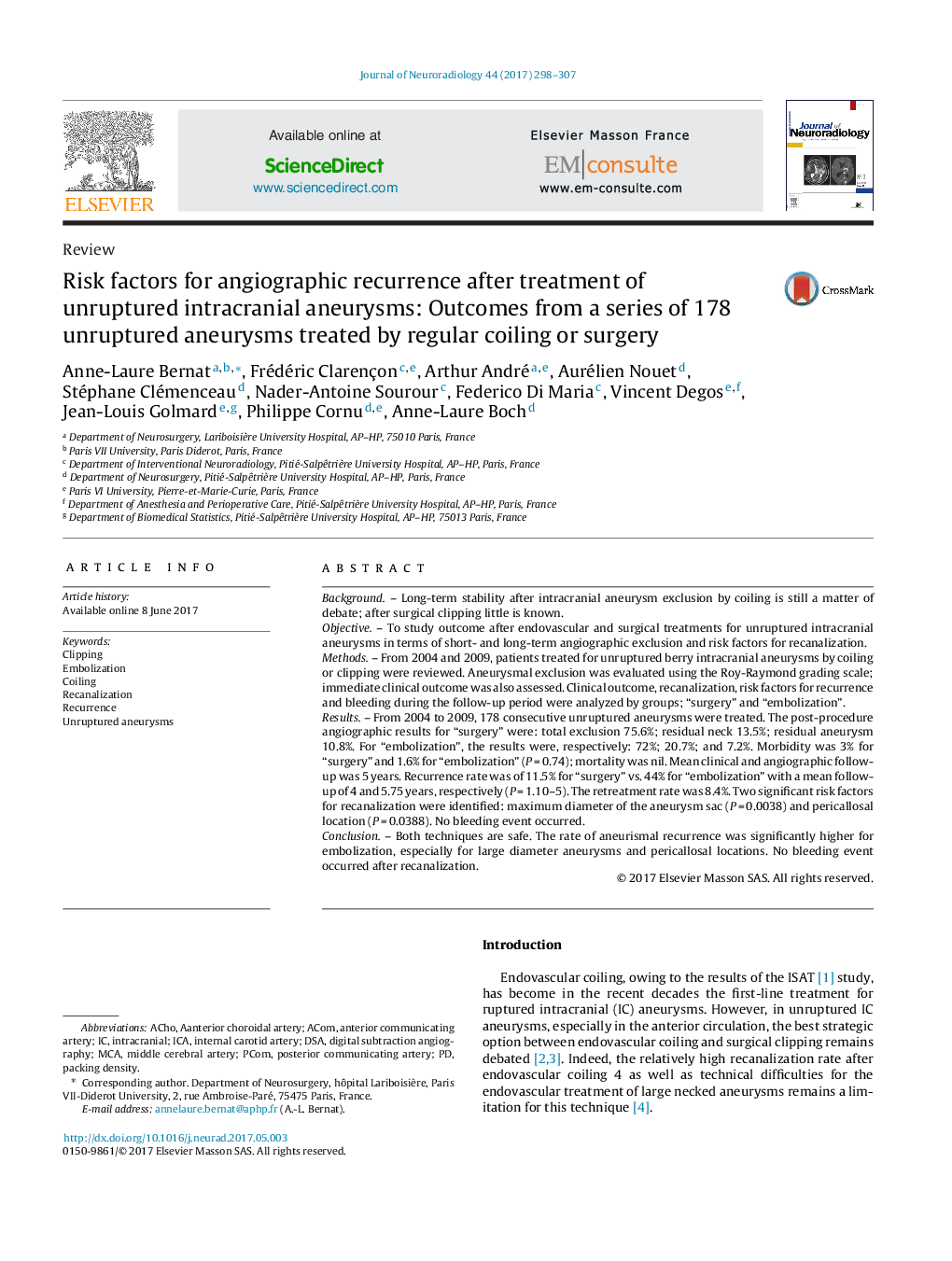| Article ID | Journal | Published Year | Pages | File Type |
|---|---|---|---|---|
| 5726959 | Journal of Neuroradiology | 2017 | 10 Pages |
BackgroundLong-term stability after intracranial aneurysm exclusion by coiling is still a matter of debate; after surgical clipping little is known.ObjectiveTo study outcome after endovascular and surgical treatments for unruptured intracranial aneurysms in terms of short- and long-term angiographic exclusion and risk factors for recanalization.MethodsFrom 2004 and 2009, patients treated for unruptured berry intracranial aneurysms by coiling or clipping were reviewed. Aneurysmal exclusion was evaluated using the Roy-Raymond grading scale; immediate clinical outcome was also assessed. Clinical outcome, recanalization, risk factors for recurrence and bleeding during the follow-up period were analyzed by groups; “surgery” and “embolization”.ResultsFrom 2004 to 2009, 178 consecutive unruptured aneurysms were treated. The post-procedure angiographic results for “surgery” were: total exclusion 75.6%; residual neck 13.5%; residual aneurysm 10.8%. For “embolization”, the results were, respectively: 72%; 20.7%; and 7.2%. Morbidity was 3% for “surgery” and 1.6% for “embolization” (PÂ =Â 0.74); mortality was nil. Mean clinical and angiographic follow-up was 5Â years. Recurrence rate was of 11.5% for “surgery” vs. 44% for “embolization” with a mean follow-up of 4 and 5.75Â years, respectively (PÂ =Â 1.10-5). The retreatment rate was 8.4%. Two significant risk factors for recanalization were identified: maximum diameter of the aneurysm sac (PÂ =Â 0.0038) and pericallosal location (PÂ =Â 0.0388). No bleeding event occurred.ConclusionBoth techniques are safe. The rate of aneurismal recurrence was significantly higher for embolization, especially for large diameter aneurysms and pericallosal locations. No bleeding event occurred after recanalization.
